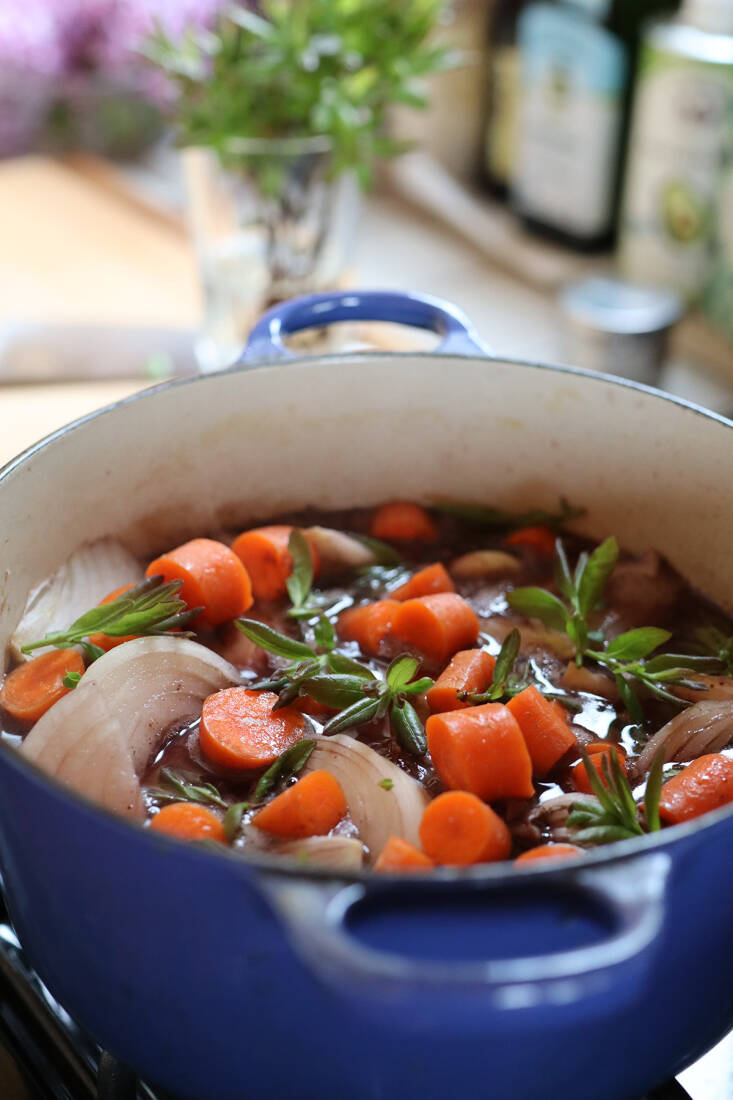It was chance that led me to crush a leaf of northern bayberry, a hardy shrub that grows up and down the Northeastern coast of the United States and into Canada. It was 2011, and I was on a barrier island in Brooklyn, heading to the beach. Bayberry covered the summer dunes like a ruffled green throw. As I opened my hand, the scent of the bruised leaf whispered, “Cook me!” In my garden-designing life I had overlooked this native duneland shrub until I learned its value as a tough rooftop plant, able to withstand wind, baking sun, and dry conditions. And now that uplifting aroma magnified its appeal. I brought home some leaves.
Bayberry is now a staple in my kitchen, at every stage. From its delicate spring foliage and small flowers through the leaves’ slow midsummer toughening, and into its fall intensity, bayberry is useful.
Photography by Marie Viljoen.
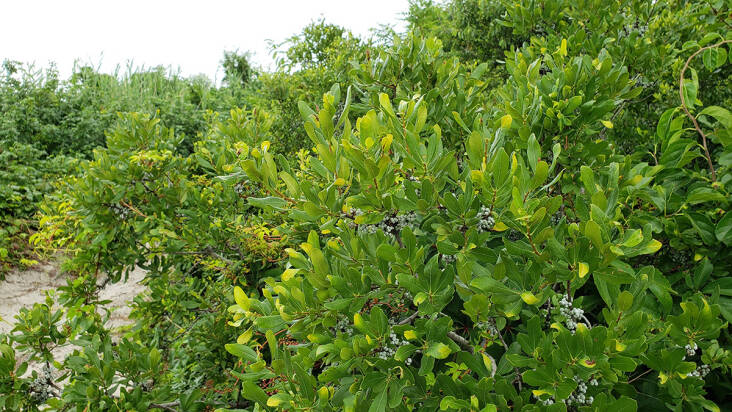
Bayberry used to be classified botanically as Myrica pensylvanica. Now, it’s Morella pensylvanica. And this reflects its connections to other bayberries, like southern bayberry (also called southern wax myrtle), M. cerifera, and California wax myrtle (M. californica).
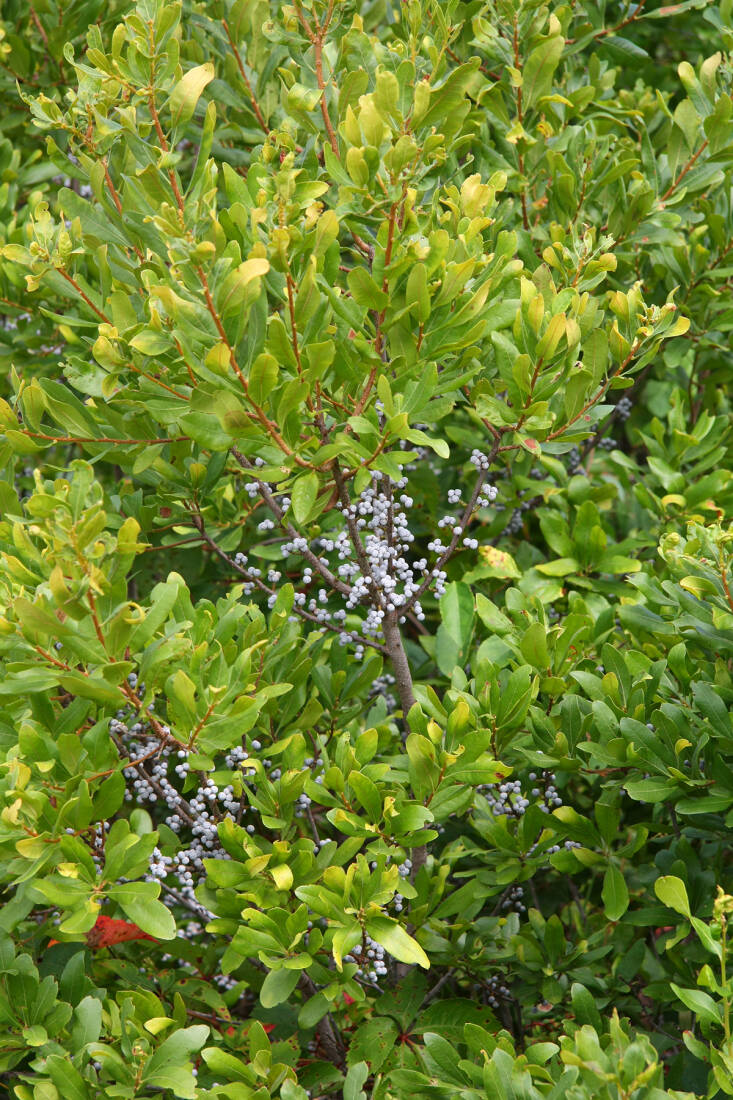
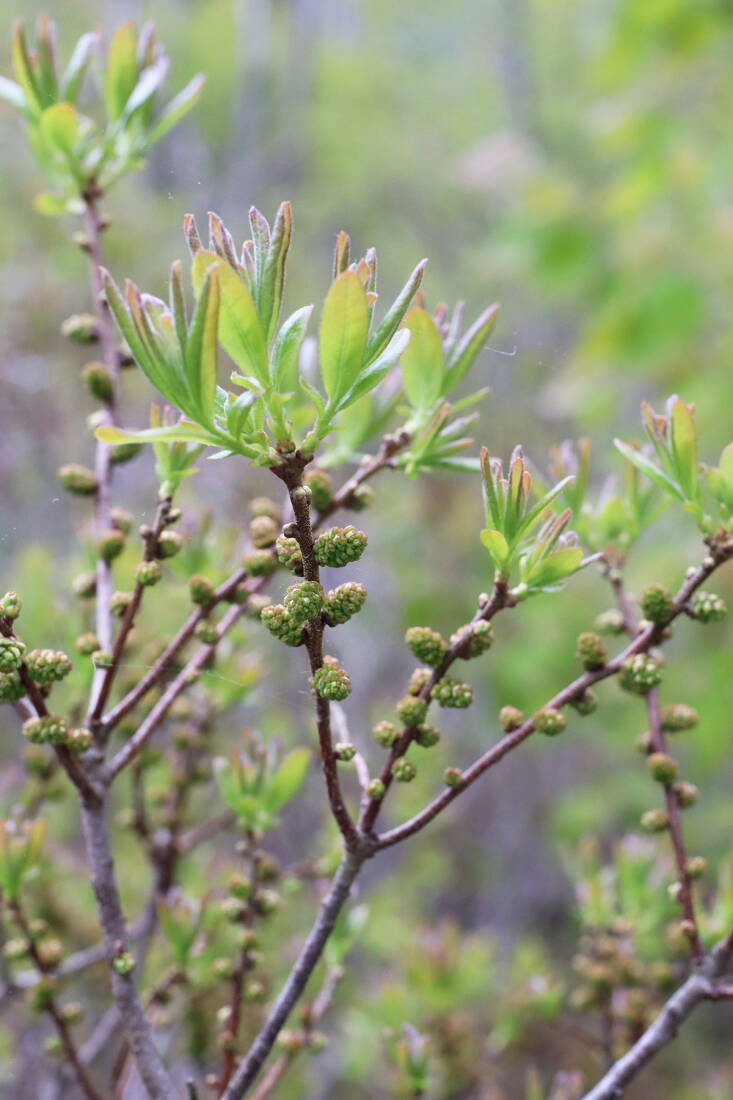
Bayberry may be best known in New England for its fruit and its use in candle-making. The summer-ripe drupes are hard little blue nuggets coated in wax. Boil enough of them long enough, and the wax floats free. But I was more intrigued by the leaves. Most foraging resources I consulted at the time listed the dried leaf as the edible part, and no one spoke about using it as a fresh herb. But that intense, fresh, resinous fragrance was calling out to be used in quantity.
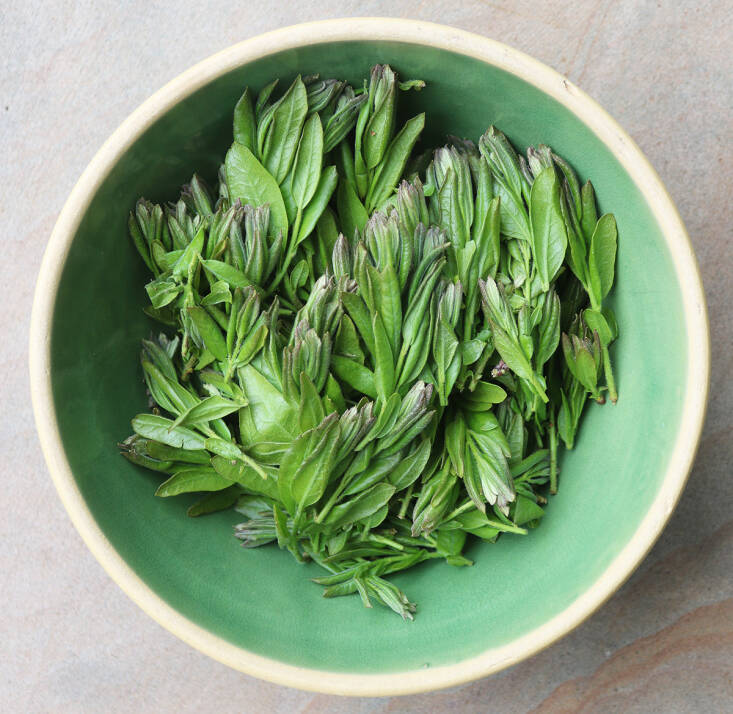
While bayberry has a flavor profile reminiscent of Mediterranean bay leaf (Laurus nobilis), it is less pronounced and so I use more of it. Where you might deploy one bayleaf, use 10 bayberry leaves. While the leaves dry well, their flavor is bland and musty. This native herb sings when it is fresh.
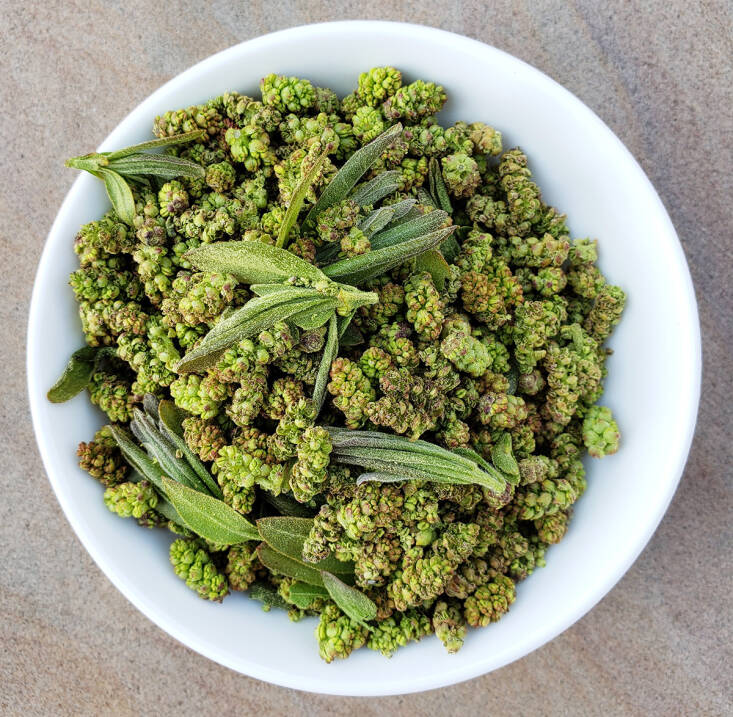
Spring’s bayberry leaves and flower buds are soft enough to chop finely and to use as prolifically as you would parsley or cilantro (although their flavors have nothing in common). They make delicious fresh herb crusts and stuffings, compound butter (slather on sliced baguette, wrap, and warm-through), and an intensely green and flavorful oil, which I freeze, to use in spoonfuls though the year.
Later, when the leaves are too fibrous to chew, they can be used whole to perfume infusions, cooking broths, seafood stews, poached mussels, roast chickens (stuff them under the skin and in the cavity), pies, sweet sauces, and even roasting or poaching fruit (they’re wonderful with plums).
